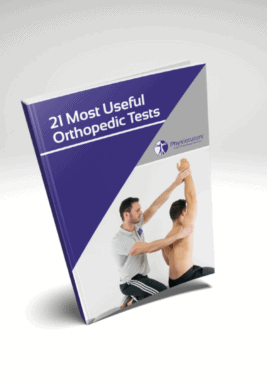Learn
Syndesmosis Ligament Tenderness | Ankle Inversion Trauma | Ankle Assessment
According to Hunt (2013) almost 25% of all ankle sprains affected the ankle syndesmosis. As the average recovery time is described to be more than 4 times longer with a syndesmosis injury compared to an ankle trauma that doesn’t involve the syndesmosis, it’s important to evaluate its integrity.
According to a study done by Sman et al. (2015), local tenderness of the syndesmosis ligaments upon palpation was reported with a sensitivity of 92% and a specificity of 29%. For this reason, this test has a moderate clinical value to exclude syndesmotic injuries but is not helpful to confirm it.
To conduct this test, first, palpate the anterior inferior tibiofibular ligament between the talus and the fibula and continue to palpate more proximally for the interosseus ligament and membrane. Tenderness on the interosseous membrane is associated with a prolonged recovery time and a more severe injury.
Then palpate the transverse ligament posteriorly and inferiorly between the tibia and the fibula and move a little more proximally to palpate the posterior tibiofibular ligament.
This palpation test is positive if tenderness or pain is reproduced on any of the four anatomical structures.
21 OF THE MOST USEFUL ORTHOPAEDIC TESTS IN CLINICAL PRACTICE

Other common orthopedic tests for syndesmosis injuries are:
- Dorsiflexion External Rotation Stress Test / Kleiger’s Test
- Fibular Translation Test
- Cotton Test
- Syndesmosis Squeeze Test
- Syndesmosis Signs & Symptoms
- Heel Thump Test
- Crossed Leg Test
References
Like what you’re learning?
BUY THE FULL PHYSIOTUTORS ASSESSMENT BOOK
- 600+ Pages e-Book
- Interactive Content (Direct Video Demonstration, PubMed articles)
- Statistical Values for all Special Tests from the latest research
- Available in 🇬🇧 🇩🇪 🇫🇷 🇪🇸 🇮🇹 🇵🇹 🇹🇷
- And much more!








